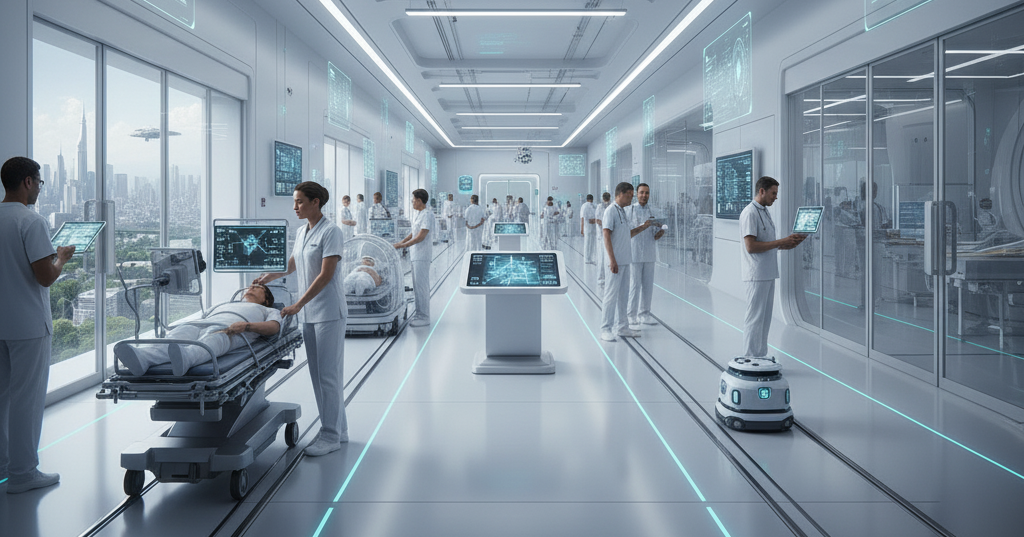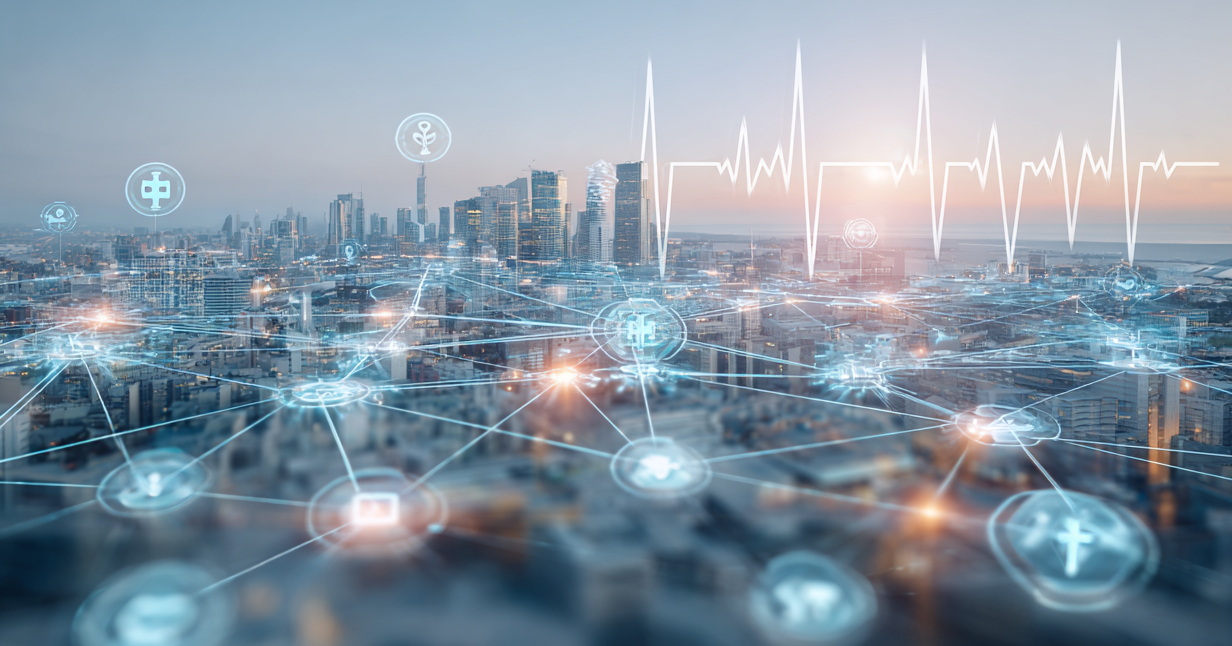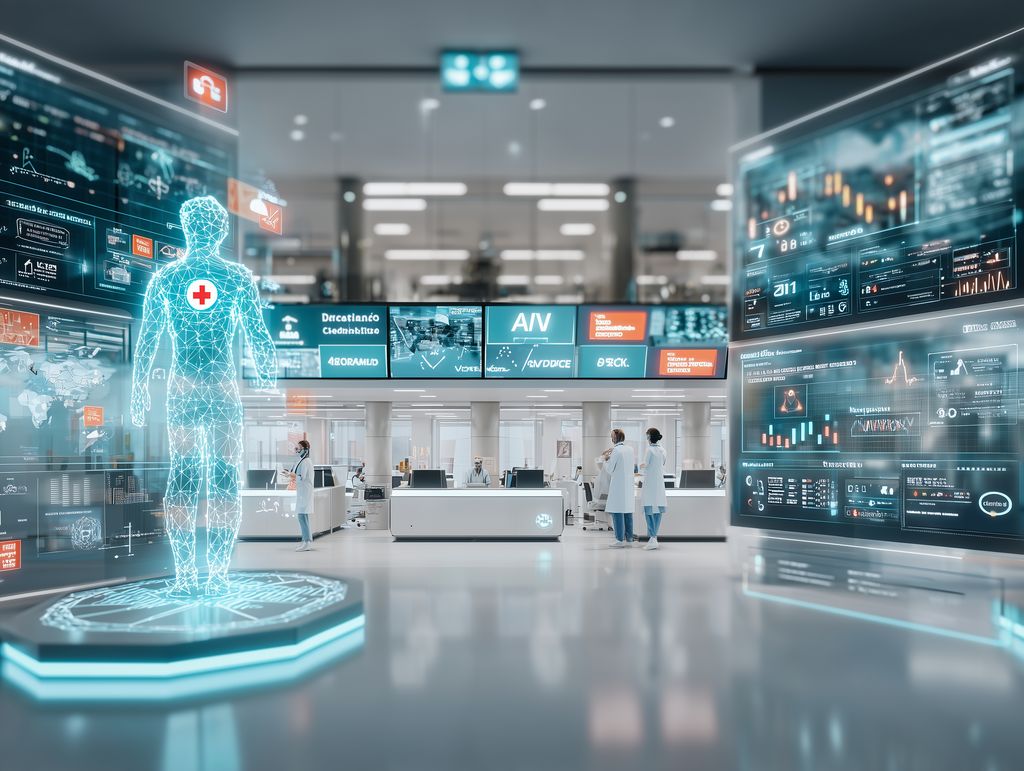As we move deeper into the digital age, the landscape of artificial intelligence and technology continues to evolve at a pace most struggle to keep up with. For CIOs and IT leaders tasked with leading the charge, staying ahead of the curve is not just advantageous—it's imperative.
But which innovation will be most important to your organization?
Each year, experts at Gartner identify key technologies that senior leaders must embrace to power their organizations to achieve their business goals. Continue reading to get a glimpse into the 2025 top ten strategic technology trends and the future of tech opportunities, investment, and deployment decisions and see how you can integrate them into your strategic planning for long-term success.
Trend #1: Agentic AI
.png?width=1280&height=720&name=ai%20agent%20with%20healthcare%20kit%20(3).png)
Agentic AI represents a significant evolution towards more autonomous artificial intelligence systems, designed to perform complex tasks, make decisions, and learn independently of human oversight. These advanced systems are equipped to plan and execute tasks, solve problems, and adapt to new challenges without human intervention.
In the healthcare sector, agentic AI is transforming operations by automating intricate workflows such as care coordination, treatment planning, and logistics. These AI agents, which are capable of self-directed learning and autonomous decision-making, greatly enhance efficiency by streamlining claims processing and expediting prior authorization workflows. Additionally, they play a crucial role in remote patient monitoring, continuously analyzing data to provide timely medical interventions. This not only optimizes healthcare delivery but also significantly improves patient outcomes by ensuring continuous care and immediate response to health changes. Healthcare leaders interested in deploying agentic AI can download the AI Agents in Healthcare: A Readiness Guide for Senior Leaders for insights into agentic AI trends, best practices, and strategies for successful implementation.
Trend #2: AI Governance Security
.png?width=1280&height=720&name=ai%20agent%20with%20healthcare%20kit%20(4).png)
As AI becomes increasingly embedded in critical infrastructures, 80% of data experts agree that it also increases data security challenges, urging the imperative to establish robust governance and security frameworks. This evolving trend emphasizes the development of rigorous standards and regulations designed to ensure that AI systems operate safely, reliably, and ethically across various sectors.
A closer look reveals several key considerations central to the responsible deployment of AI. First, there is a need to mitigate algorithmic biases that can skew AI decision-making processes, potentially leading to unfair or harmful outcomes. Secondly, enhancing transparency in AI operations allows stakeholders to understand how AI decisions are made, fostering trust and facilitating oversight. Additionally, maintaining strict accountability ensures that AI systems and their outcomes adhere to ethical standards and legal requirements.
Lastly, the security of AI systems against cyber threats and adversarial attacks cannot be overstated. Protecting these systems is crucial for preserving their integrity and functionality, particularly in applications where safety and reliability are paramount. As AI continues to integrate into the fabric of society, creating a secure and trustworthy AI environment is not just beneficial—it is essential for sustaining confidence in how these technologies reshape our world.
Trend #3: Disinformation Security

The rise of digital media has been accompanied by the spread of disinformation, which poses substantial risks to security and society. Disinformation security seeks to mitigate these risks by developing both technical and policy-oriented solutions. This trend utilizes advancements in media forensics and natural language processing to detect and counteract false information.
With studies showing that 66% of U.S. consumers perceive over three-quarters of social media news as biased, it becomes crucial to analyze patterns of behavior across social networks. Such analyses are vital in pinpointing and disrupting coordinated disinformation campaigns, thereby safeguarding the authenticity and integrity of information on digital platforms.
Trend #4: Post-Quantum Cryptography
.png?width=1920&height=1080&name=neurological%20enhancements%20(1).png)
The emerging field of quantum computing poses increased risks to existing cryptographic standards due to its potential to break these systems with its superior processing capabilities. In response, post-quantum cryptography is advancing the development of new cryptographic techniques that can withstand the power of quantum machines. Innovations such as lattice-based, code-based, and multivariate cryptographic methods are being refined to safeguard communications as we approach the post-quantum era, ensuring that our digital interactions remain both confidential and secure.
In sectors like healthcare, where data is increasingly digitized, the importance of protecting this information from future quantum threats is critical. Post-quantum cryptography in healthcare focuses on creating robust encryption methods designed to shield patient data from potential quantum decryption attacks. By securing sensitive health records with these advanced techniques, we can maintain confidentiality and sustain trust in digital healthcare systems, safeguarding vital personal information against the next generation of computational threats.
Trend #5: Ambient Invisible Intelligence
Ambient invisible intelligence aims to integrate advanced sensors and machine learning technologies into everyday environments, creating spaces that are intuitively responsive to human presence and needs. This trend is evident in smart homes and buildings where technology anticipates and reacts to the occupants’ behaviors and preferences without explicit commands. The goal is to enhance comfort and efficiency seamlessly, merging digital intelligence with physical spaces to support a higher quality of life.

The concept of ambient invisible intelligence in healthcare translates to creating smarter, responsive healthcare environments that improve patient care and staff efficiency. This includes smart hospital rooms that adjust conditions to suit patient preferences and needs, and sensor-enabled facilities that streamline operations from inventory management to patient monitoring, all operating seamlessly within the healthcare provider’s environment.
For example, intensive care units (ICUs) in the United States represent a significant financial burden, costing the healthcare system approximately $108 billion annually and accounting for up to 13% of all hospital costs.
In one study, ambient intelligence is being leveraged to enhance patient mobilization and monitoring in ICUs, where one study demonstrated an 87% accuracy in categorizing patient movements, potentially reducing ICU-acquired weaknesses by 40%. Another critical application of this technology is in controlling hospital infections, with ambient sensors significantly outperforming traditional methods in monitoring hand hygiene compliance.
Trend #6: Energy Efficient Computing

The escalating demand for computing power calls for innovations in energy efficiency across devices and systems. Energy-efficient computing involves developing new chip architectures and power-aware algorithms, and exploring alternative computing paradigms such as neuromorphic and quantum computing. These technologies aim to reduce the energy consumption of data centers and personal devices, which is crucial for minimizing the environmental impact of our growing digital activities.
Trend #7: Hybrid Computing
.png?width=1920&height=1080&name=energy%20efficient%20computing%20(1).png)
Hybrid computing, or the combination of various computing, storage, and network mechanisms to solve computational problems, addresses the limitations of traditional computing architectures by combining them with specialized accelerators like GPUs and FPGAs, and with emerging technologies like quantum computing. This convergence allows for more versatile and efficient processing capabilities, making computing systems more adaptable to varied tasks and significantly enhancing their performance across a range of applications.
Trend #8: Spatial Computing
Spatial computing merges digital information with the physical world through technologies such as augmented reality (AR), virtual reality (VR), and mixed reality (MR). This integration enables new ways of interacting with digital content, allowing for more immersive experiences in gaming, remote collaboration, education, and healthcare operations. By blending digital and physical elements, spatial computing opens up new avenues for interaction and visualization, enhancing both productivity and entertainment.
In healthcare, AR and VR are dramatically reshaping medical education and patient treatment. These technologies provide innovative methods for medical training, surgical visualization, and therapeutic options, offering immersive experiences that enhance learning and clinical care. For instance, Virtual Reality Exposure Therapy (VRET) effectively treats PTSD by immersing patients in realistic, controlled environments to safely address fears and traumatic memories, with studies reporting success rates of 66%-90%.
Trend #9: Neurological Enhancements

From the invention of electroencephalography, or the EGG, 100 years ago, advancements in neuroscience and related technologies are paving the way for neurological enhancements that could significantly alter human cognitive and sensory abilities. Technologies such as brain-computer interfaces and neural implants are being developed to control devices, restore sensory functions, or augment human performance. While these technologies hold potential for assisting individuals with disabilities, they also raise ethical questions about the enhancement of human capabilities beyond their natural limits.
Trend #10: Polyfunctional Robots
Polyfunctional robots are designed to perform a broad range of tasks, adapting their capabilities to different environments and needs. Through modular designs and reconfigurable hardware, these robots can switch between functions and tools dynamically, supported by AI-powered control systems and advanced sensors. The versatility of polyfunctional robots allows them to replace multiple specialized machines, providing cost-effective solutions in manufacturing, service industries, and personal robotics.
Final Thoughts
As organizations navigate an increasingly complex digital landscape, the strategic adoption of emerging technologies will define market leaders and laggards. Among the top trends shaping the future, Agentic AI stands out as a transformative force—one that goes beyond automation to deliver intelligent, self-directed decision-making at scale.
For CIOs and IT leaders, the imperative is clear: they must be bold to gain advantage with Agentic AI. AI agents are already revolutionizing workflows, optimizing care coordination, and accelerating prior authorization processes - all to improve efficiency, increase productivity, and cut down administrative burden.
The question is no longer whether organizations should embrace Agentic AI, but how quickly they can implement it to capture value. As enterprises assess their AI readiness, those who proactively invest in Agentic AI capabilities will be best positioned to navigate disruption, enhance productivity, and redefine industry standards.
Whether you’re just beginning your Agentic AI journey or looking to scale its impact, explore Demystifying AI Agents and Agentic AI for foundational insights, or dive into our AI-focused resource center to stay ahead of the curve.
.png)



